www.johntyman.com/peru/17.html
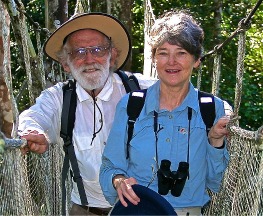 |
CULTURES IN CONTEXT PERU The Incas and Prehistoric Cultures IV: INCA CULTURE 4.8: Maras |
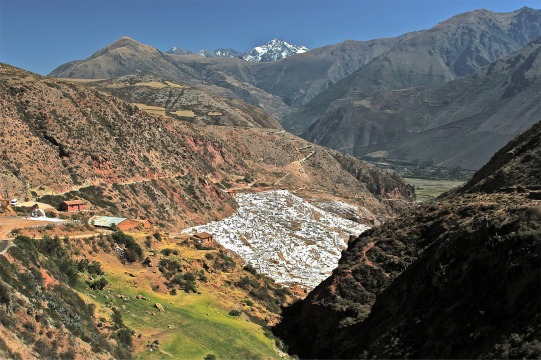
173. The Maras Salt Ponds (sometimes identified as "Salt Mines") lie close to Moray. There are 5,000 of them. Some are unused today but many are owned by families that have harvested salt here since the time of the Incas and some even longer. |
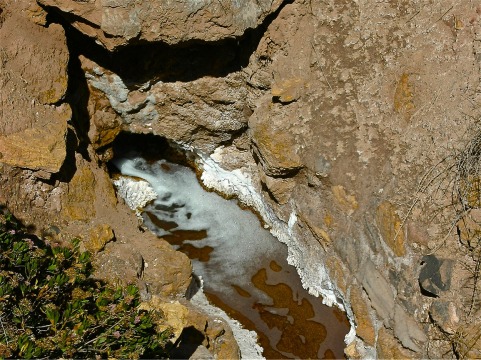
174. The salt comes from a local subterranean stream of highly salted water which emerges in a spring, a natural outlet. The flow of the spring was directed through an intricate system of channels so the water ran down the valley through a whole series of ponds … each typically four or five metres square in area, and thirty centimetres in depth. |
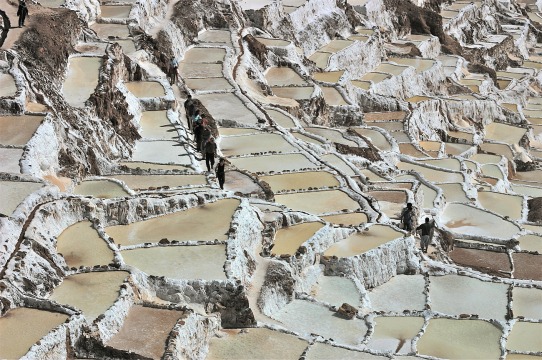
175. The first salt ponds here were built in AD200-AD900 by the Chanapata culture, pre-dating the Incas. The terraces are known in Quechua language as Kachi Raqay and they are situated at an elevation of 3,000 meters above sea level. They supplied the entire Inca Empire with salt and later the Viceroyalty of Peru. |
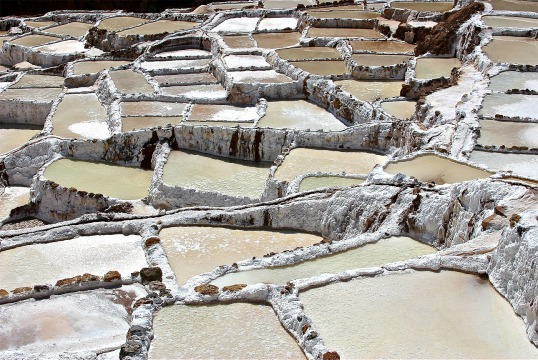
176. The altitude of the pond terraces slowly decreases, allowing the water to flow through a myriad of small channels and be introduced slowly through a notch in one sidewall of each pond. The proper maintenance of the adjacent feeder channel, the side walls and the water-entry notch, the pond's bottom surface, the quantity of water, and the removal of accumulated salt deposits all require close cooperation among the community of users, in a system established during the time of the Incas, if not earlier. |
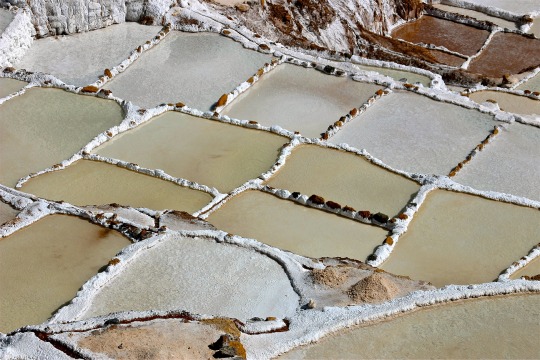
177. The traditional way of extracting the salt is unchanged and the individual ponds have been passed from one generation to the next. The brine is concentrated and the salt separated off by evaporation. As the water evaporates salt crystals form on the inner surfaces of the ponds. When enough crystals have formed the occupier of the pond blocks the flow of water and allows the pond to dry out. |
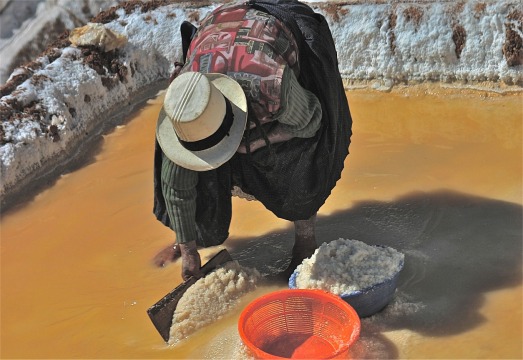
178. The owner of the pond (or most likely his wife!) then scrapes the salt from the sides and bottom of the pan … standing in concentrated brine and working without gloves or boots, as they still do today. Their husbands carry it home, for family use or sale in local markets. The drainage notch is then opened and the whole process begins again. |
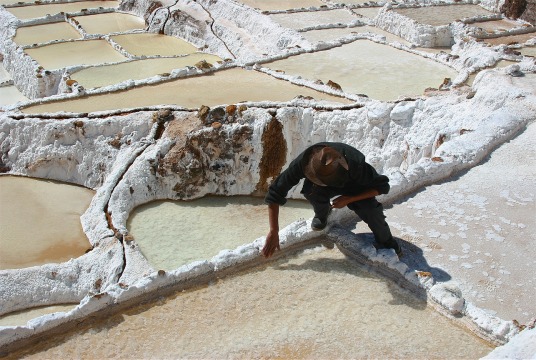
179. The area is not widely industrialized even today, and the salt is still bagged up, and sold at local markets. There are about 3,000 pools that are still harvested by a community of local families who control the saltpans and the trails to the valley, along which the salt is moved from the site. |
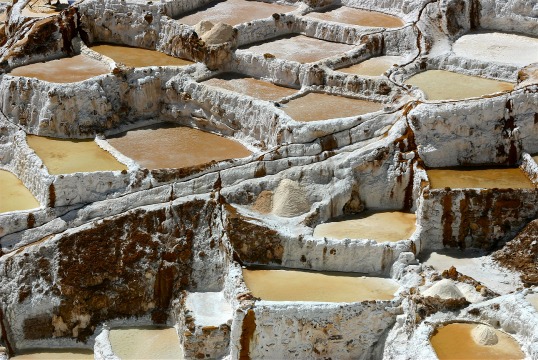
180. Ponds have long been made available to any person wishing to harvest salt. The operators of the ponds must be members of the community, and families that are new to the community wishing to work a salt pond get the one farthest from the community. The size of the salt pond assigned to a family depends on the family's size. |
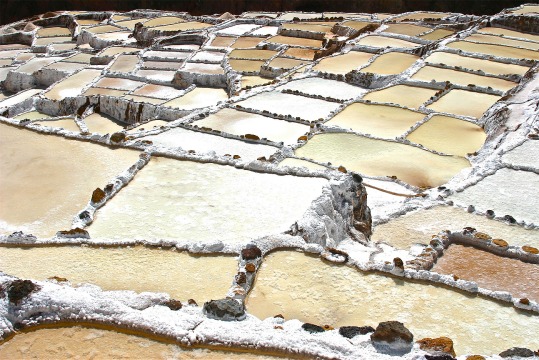
181. Usually today there are many unused salt ponds available to be worked. Any prospective salt farmer need only locate an empty unmaintained pond, consult with the local cooperative, learn how to keep a pond properly within the accepted communal system, and start working. (The lowest terraces.) |
![]()
Text and photos by John Tyman
Intended for Educational Use Only.
Contact Dr. John Tyman at johntyman2@gmail.com
for information regarding public or commercial
use.
![]()
www.hillmanweb.com
Photo processing, Web page layout, formatting
and hosting by
William
Hillman ~ Brandon, Manitoba ~ Canada